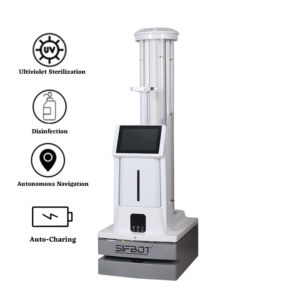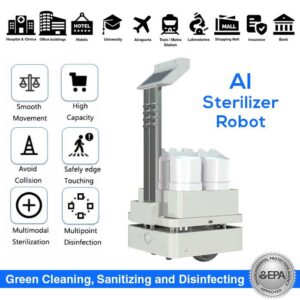Disinfection: Dry Fogging VS UVC
Effective disinfection is essential in preventing healthcare-associated infections, known as Healthcare-associated Infections (HAIs).
One thing is clear. No-touch modalities for hospital room disinfection are a powerful force in the battle against HAIs because they take human error out of the equation. The machines do the work, not a cleaning staff that may or may not be inclined or able to do a thorough job.
Currently, there are two no-touch disinfection methods that are widely available: ultraviolet light (UV-C) or fogging with hydrogen peroxide vapor or mist.
Disinfection is the reduction in the number of bacteria, viruses, or fungi to a desired concentration. To prevent these devastating breeches in biosafety, and more and more it looks like the solution may come down to UV Disinfection vs. Hydrogen Peroxide.
UVC radiation is a known disinfectant for air, water and surfaces that can help mitigate the risk of acquiring an infection and has been used extensively for more than 40 years.. All bacteria and viruses tested to date (many hundreds over the years, including various coronaviruses) respond to UV-C disinfection. There are no known pathogens resistant to UV-C. A clear indication that UV-C light can play a valuable part in your protection strategy.
Dry fogging is a relatively new decontamination technology that uses liquid disinfectant and compressed air as consumables. The ultrafine droplet size of the dry fog prevents it
from easily falling onto surfaces, a desirable quality for space/
area decontaminations.
But there is debate as to what is the best strategy in waging war on pathogens.
Most agree this disparity comes down to the fundamental differences between these two technologies. UVC technologies struggle with rooms that are not fully lit, meaning they are less likely to achieve a full whole-room disinfection. This is usually due to shadowing and other obstructions that create hiding spaces to shelter bacteria, which later spread.
Hydrogen peroxide fogging, on the other hand, achieves whole room surface disinfection. Because the quantity of dispensed disinfectant is controlled, there’s no need to reposition the fogger. The only room prep required is covering the HVAC vents.
- Both can only be used when a patient room is empty.
- Both require removal of debris by maintenance workers before the systems can be used.
- Both impact the time required to turnover a hospital room.
These two disinfection modalities are best used hand in hand to insure a scrutinized sterilization job. The dry fogging is an effective, efficient and thoroughly vetted. The UVC is a cost effective, moderately safe in the ongoing fight against HAIs, the choice of allies is clear.
Reference: UV DISINFECTION VS. HYDROGEN PEROXIDE: WHICH IS THE SUPERIOR WHOLE-ROOM DISINFECTION?.
[launchpad_feedback]


